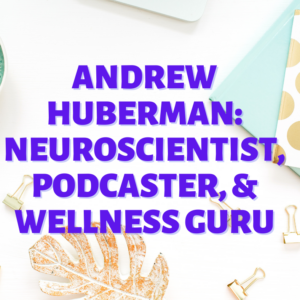Mindfulness techniques offer practical ways to ground yourself in the present moment, even amidst life’s chaos. You probably know someone who swears by meditation, or maybe you’ve seen articles about the benefits of mindfulness for stress reduction. But, with so much information out there, figuring out where to start can be a challenge. This is understandable. It’s easy to feel overwhelmed by all the techniques and wonder if you’re doing them “right.” But don’t worry, there’s no one-size-fits-all approach. Mindfulness is a practice, not about achieving perfection.
Table of Contents:
- Simple Yet Powerful Mindfulness Techniques to Try Today
- Integrating Mindfulness Techniques Into Everyday Life
- Addressing Specific Challenges with Mindfulness Techniques
- FAQs About Mindfulness Techniques
- Conclusion
Simple Yet Powerful Mindfulness Techniques to Try Today
Let’s explore some easy-to-incorporate mindfulness techniques that can benefit your daily life. We’ll look at both traditional methods and simple mindfulness exercises to bring awareness to everyday tasks.
1. Mindful Breathing: Your Anchor to the Now
Think of mindful breathing as a quick mental reset button. It’s something you can do anytime, anywhere to reconnect with the present moment.
Here’s a simple guide:
- Find a comfortable posture – sitting upright, lying down, or even standing works.
- Close your eyes if that feels comfortable for you.
- Bring your attention to your breath, focusing on the feeling of your chest rising and falling.
- Don’t try to change your breath; simply observe it without judgment.
- If your mind wanders, gently guide it back to your breath. Think of it like training a playful puppy; it takes time and patience.
Research shows even a few minutes of daily mindful breathing can positively impact stress levels and mental clarity. This can be a great starting point for exploring mindfulness activities.
2. Body Scan Meditation: Tuning In to Your Physical Sensations
This mindfulness technique involves bringing awareness to your body, noticing any sensations you experience without judgment. It’s a powerful way to release tension and cultivate a sense of embodiment.
A simple body scan involves mentally scanning your body from head to toe or vice-versa, paying attention to each area. Are your shoulders tense? Do your feet feel warm or cold? Is there tingling in your fingers? The key is simply to observe, acknowledging these feelings without trying to change them.
If you need a little guidance, consider this 30-minute guided body scan narrative by expert and founder of Mindfulness-Based Stress Reduction, Jon Kabat Zinn.
3. Mindful Walking: Transforming an Everyday Activity
This isn’t about getting somewhere quickly. It’s about slowing down and engaging with the experience of walking. Find a quiet place, preferably outdoors.
As you walk, pay attention to the feeling of your feet on the ground. Notice the rhythm of your steps and the gentle swing of your arms. Engage your senses by noticing the colors, sounds, and scents around you.
This technique turns an ordinary activity into a mindful experience, fostering a deeper connection with your surroundings. This is especially helpful if you’re looking for mindfulness techniques for groups, as it can be done together in a park or other natural setting.
4. Mindful Eating: Savoring Each Bite
Eating is often something we rush through, barely tasting our food. Mindful eating brings conscious awareness to the act of nourishment, enriching our enjoyment of meals and improving digestion.
Start by putting away your phone and turning off any distractions. Observe the colors, textures, and smells of your food. Take a bite and chew slowly, savoring each flavor and feeling the different textures in your mouth.
You might be surprised by how much more you enjoy your food when you practice mindful eating. This is just one example of how incorporating mindfulness techniques can enhance even mundane aspects of your day.
5. Five Senses Mindfulness Technique: Grounding Yourself When Overwhelmed
Feeling overwhelmed? Try this five senses exercise. You can use it to reconnect to the present moment and ground yourself during moments of anxiety or stress.
The exercise is simple. Focus on one sense at a time and identify three to five things you can experience through that sense.
- **Sight**: What do you see around you? Perhaps the patterns on your ceiling, the texture of a wooden table, or sunlight streaming through your window?
- **Sound**: Tune in to the subtle sounds around you. Do you hear birds chirping? Traffic noises in the distance? Or the quiet hum of your refrigerator?
- **Smell**: Is there a particular scent lingering in the air? Notice what your senses pick up – maybe fresh-cut grass, the lingering scent of your shampoo, or the aroma of brewing coffee.
- **Touch**: Pay attention to any tactile sensations. Feel the texture of your clothes against your skin, the smoothness of your phone screen, or the softness of a blanket.
- **Taste**: Take a moment to notice the lingering taste in your mouth. Is it minty, sweet, or slightly bitter?
Integrating Mindfulness Techniques Into Everyday Life
The key takeaway? You don’t need a meditation cushion or a secluded retreat to practice mindfulness techniques. They can be easily integrated into your daily routine, helping you find calm amid life’s inevitable ups and downs.
Here are a few additional ways to incorporate mindfulness:
- Set reminders on your phone to take a few mindful breaths.
- Dedicate five minutes each morning to focusing on your breath or practicing a body scan.
- Engage in mindful walking during your lunch break.
- Practice mindful eating during one meal per day.
You can find another great mindfulness exercise if you’re strapped for time in this 3-Step Mindfulness Worksheet. This exercise only has three steps but can still provide moments of calm and centeredness.
Remember, the journey of mindfulness is just that – a journey. It’s okay to start with short bursts and gradually work your way up to longer sessions.
Addressing Specific Challenges with Mindfulness Techniques
While the techniques above offer a general framework for mindfulness, it’s important to acknowledge that specific situations may benefit from more targeted approaches. For example, dealing with anxiety, anger, or depression often requires mindful awareness tailored to each experience. Incorporating simple mindfulness into your daily life can make a big difference.
Managing Anxiety with Mindfulness
Research from the Mayo Clinic suggests that engaging all your senses outdoors is especially beneficial for mindfulness practice, which can be particularly helpful when trying to manage anxiety. Engaging with nature can be incredibly grounding.
It’s natural to want to avoid anxiety and uncomfortable feelings, but sometimes those avoidance tactics can make anxiety worse. Instead of trying to suppress or ignore those feelings, see what happens when you try the mindfulness approach of accepting these sensations with open curiosity.
Mindfulness Techniques for Dealing with Anger
Managing anger can be a lifelong challenge for some. DBTM, or Dialectical Behavioral Therapy-Mindfulness training, has proven helpful in this area. In one study, researchers found DBTM techniques useful in a psychiatric setting. The goal was to teach participants skills for regulating intense emotional responses. This is a good example of how mindfulness interventions can be used in group therapy settings.
Looking for more mindfulness-based approaches to dealing with anger? Try this relaxing exercise called Leaves on a Stream. It provides techniques you can utilize to mindfully process anger when it surfaces.
Cultivating a Mindful Approach to Depression
The organization Mindful.org offers various insights on mindfulness. For instance, they provide descriptions of different attitudes to help cultivate a solid foundation for approaching and understanding depression more mindfully. They list ten attitudes you can consider incorporating into your approach, such as:
- Beginner’s mind
- Non-judging
- Acceptance
- Letting go
- Trust
- Patience
- Gratitude
- Generosity
- Non-striving
- Commitment
By practicing and embodying these attitudes more regularly, it might become easier to process challenging emotions. Remember, you don’t have to face this alone; consider seeking support from a qualified therapist for more guidance.
FAQs About Mindfulness Techniques
What are mindfulness techniques?
Mindfulness techniques are specific practices that encourage you to be fully present in the current moment, without judgment. They often involve focusing on your breath, body, senses, thoughts, and emotions as they arise. Mindfulness helps cultivate awareness, reduces stress, and improves overall well-being. It’s about paying attention to your present moment experience with curiosity and openness.
What are the 7 principles of mindfulness?
While various interpretations exist, seven commonly cited principles of mindfulness are non-judging, patience, beginner’s mind, trust, non-striving, acceptance, and letting go. These principles can serve as guidelines for developing a deeper understanding of yourself and your experiences.
What are the 3 R’s of mindfulness?
The 3 R’s, as shared by some mindfulness practitioners, often stand for:
- Recognize: Notice what’s happening in your body and mind without judgment.
- Release: Let go of any tension, worry, or negative thoughts. Don’t engage with them.
- Respond: Choose a response that aligns with your values and intentions, rather than simply reacting impulsively.
What is an example of a mindfulness technique?
Mindful breathing is one simple yet powerful mindfulness technique. Focus solely on your inhalations and exhalations, noticing the natural rhythm of your breath without trying to change it. This technique can be particularly helpful for managing anxiety and promoting relaxation.
What are the 4 skills of mindfulness?
The four skills of mindfulness, based on traditional teachings, encompass:
- Body awareness (Kaya): Observing physical sensations.
- Feelings/Sensations (Vedana): Noticing pleasant, unpleasant, or neutral sensations.
- Mind (Citta): Becoming aware of your thoughts and mental states.
- Mental Qualities/Objects of Awareness (Dhamma): Understanding the patterns and habits of your mind.
Conclusion
By weaving even small moments of mindfulness into your daily life, you can enjoy benefits like improved focus, decreased stress, greater emotional regulation, and a sense of calmness. Keep in mind that everyone’s mindfulness journey is unique. Be kind to yourself as you explore what works best for you and remember that consistency, even in small doses, often leads to the most meaningful changes over time. It’s a lifelong exploration of discovering what helps you become more fully present and engaged in your life, rather than a destination you reach.
Mindfulness techniques are not about emptying your mind or achieving a state of bliss; it’s about building a relationship with your thoughts, feelings, and physical sensations. They equip you with the ability to notice when you’re caught in negative thought patterns or feeling overwhelmed and offer techniques to ground yourself back to the present moment. Remember, just as with any new skill, incorporating mindfulness takes practice and consistency.

